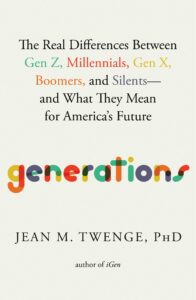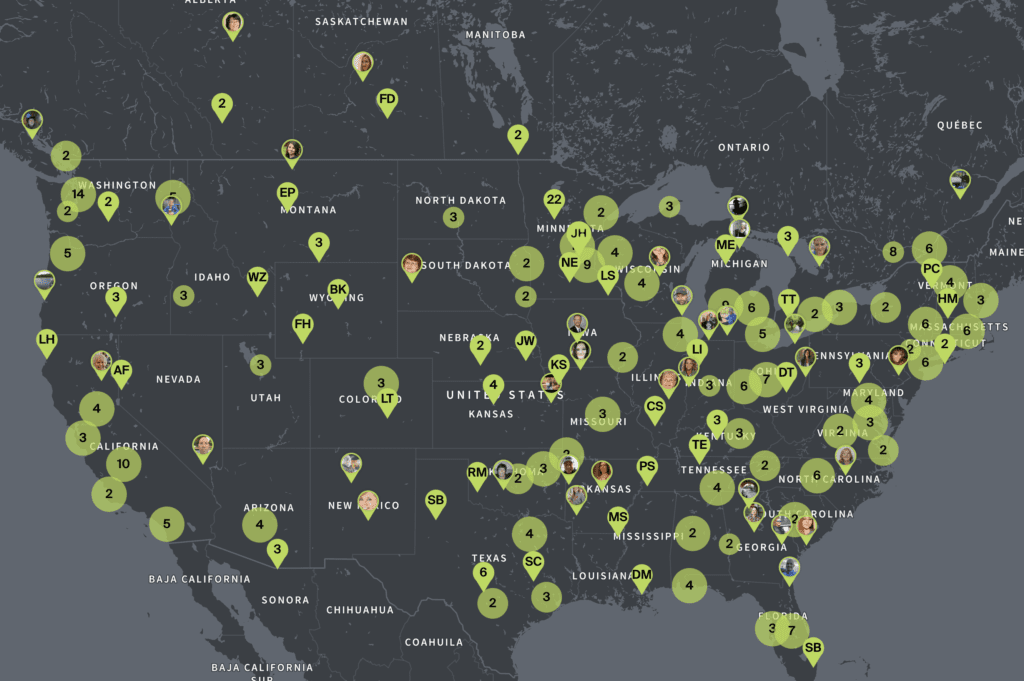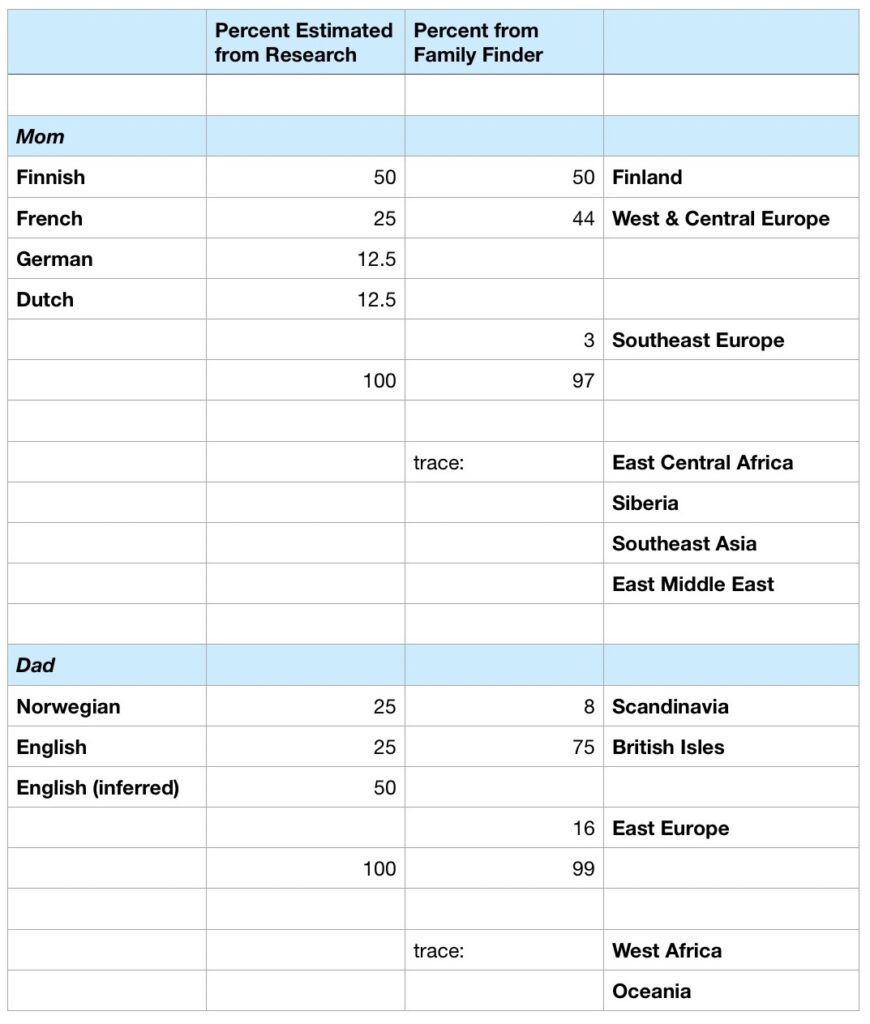I finally ran the mtDNA test on my dad. This test looks at the maternal line and can be run on everyone, not just women. You might recall that I was able to hook into others’ research when I ran this test on my mom: https://jillholman.com/genealogy/marie-marguerie-and-mtdna/
No such luck this time – we don’t have any close matches yet (genetic distance = 0). And among the matches we do have, there is no agreement on earliest known ancestor, nor anything in common in trees that I can find. And of course there are a lot of missing trees. Hopefully more cousins will test and provide tree information back several generations so we can make progress here soon. (You might also recall that this family is tricky for traditional document research and we have had a bit of a brick wall for years: https://jillholman.com/genealogy/john-margaret-williams/)
So our maternal line back from Margaret Emma Jones is still a mystery for now.
We can also learn a bit about our ancient ancestors from mtDNA. The T haplogroup is in the book The Seven Daughters of Eve by Bryan Sykes. See the chapter on Tara.
For our ancestors, scientists currently believe the mitochondrial haplogroups evolved something like this:
- L – Africa 192,400 years ago (Mitochondrial Eve)
- L1-6 – 170,000 years ago
- L3 – 71,600 years ago
- N – 70,000 years ago
- R – South Asia – 60,000 years ago
- R2’JT – 55,000 years ago
- JT – Near East/Europe – 50,000 years ago
- T – 33,300 years ago
- T2 – 23,800 years ago
- T2b – 10,600 years ago
- T2b24 – 7,500 years ago
For the earlier date estimations, check out figure 6 here: https://www.ncbi.nlm.nih.gov/pmc/articles/PMC2694979/pdf/main.pdf
For the T date estimations, check out S2_fig here: https://journals.plos.org/plosone/article?id=10.1371/journal.pone.0118625
Resources
- Map overview of the mitochondrial haplogroups: https://en.wikipedia.org/wiki/File:Human_migrations_and_mitochondrial_haplogroups.PNG
- Learn about Mitochondrial DNA here: https://dna-explained.com/mitochondrial-dna/
- Take the test here: https://www.familytreedna.com/products/mt-dna
- Nice post about the author and the book The Seven Daughters of Eve: https://dna-explained.com/2020/12/20/bryan-sykes-finally-meets-eves-7-daughters/
And remember, get your old people tested as soon as possible!





